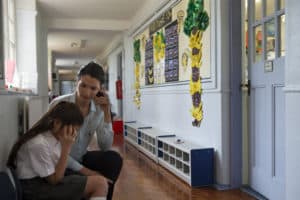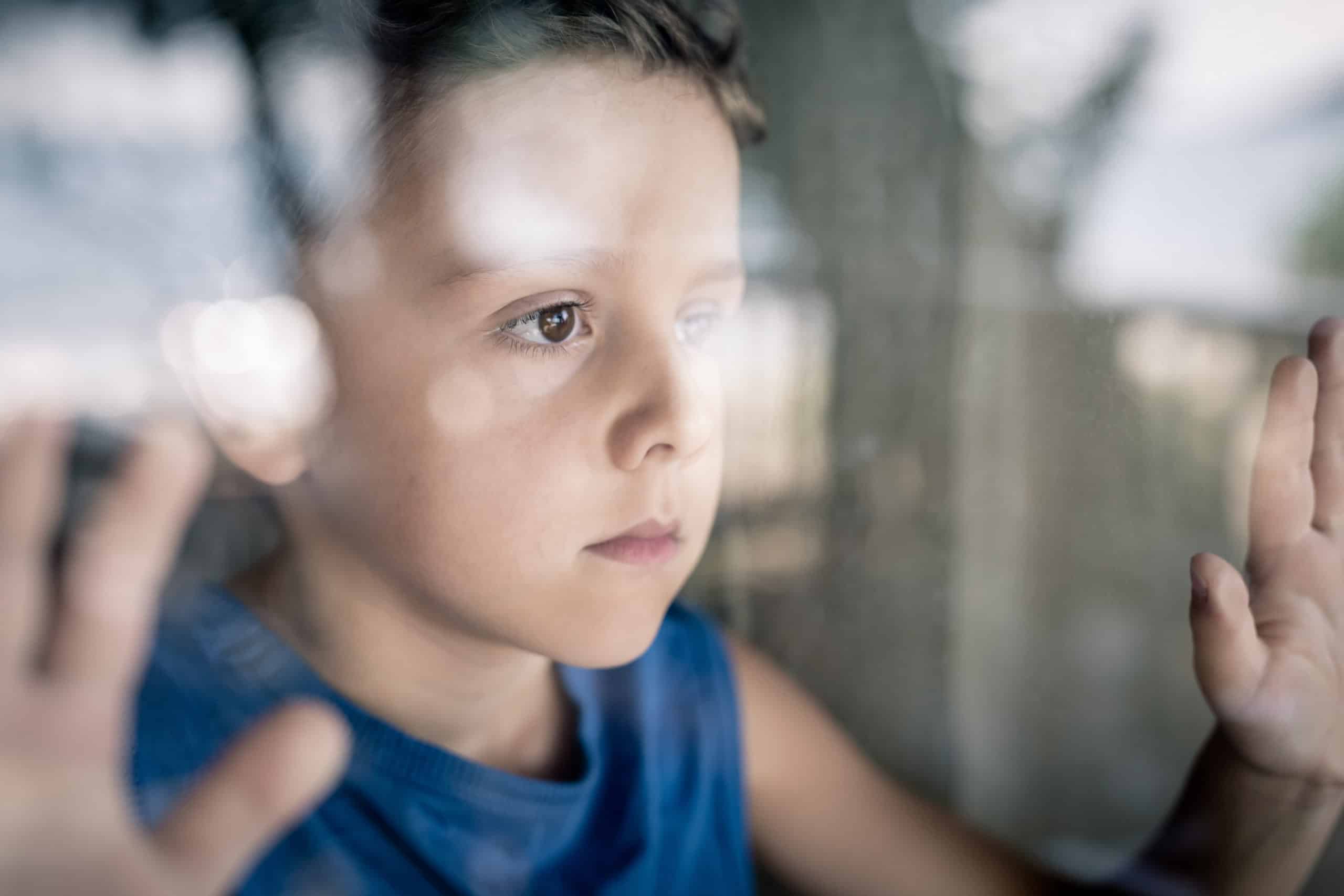Last August, a staff member sent a message asking me to pray for a seven-year-old child in foster care. The child, named Anna, had just been admitted to a mental health hospital for trying to harm herself.
Anna lived in a housing project in South Chicago. She was recently removed from her biological mother due to neglect and placed with a foster mother. With school closings and an overburdened family court system, the young girl now lived with her new foster family seven-days-a-week, 24-hours-a-day. Her school, which had been a refuge for Anna (and hundreds of thousands of other kids in foster care like her), had been closed for months.
Isolation and Loneliness for Children with Trauma
For all of us, COVID-19 lockdowns ushered unprecedented feelings of isolation and confusion. Family and loved ones, like never before, became our lifelines.
However, countless children like Anna, suffering from the effects of severe PTSD due to family-induced childhood trauma, experienced the harsh reality of emotionally navigating the pandemic without the comfort of family or friends.
In attempting to take her life, Anna was not alone. A June 2019 report by the CDC (Morbidity and Mortality Weekly Report) confirmed that the suicide attempt rate leaped by as much as 50 percent among teenage girls during the coronavirus pandemic.
US News and World Report reported, “The findings from this study suggest more severe distress among young females than has been identified in previous reports during the pandemic, reinforcing the need for increased attention to, and prevention for, this population.”
Prior to COVID-19 Bessel Van Der Kolk, M.D., in his New York Times bestseller, The Body Keeps The Score, refers to childhood trauma as, “The hidden epidemic.”
In the midst of this pandemic, there is not yet data about the effects of isolation on children in foster care and the subsequent childhood trauma.
Looking Out for Vulnerable Children
In 2019, more than five children died each day in the United States from child abuse or neglect. In terms of child fatalities, we’re experiencing a Sandy Hook shooting every single week.
The shockingly underreported reality is that during the pandemic, millions of vulnerable children were forced to remain home with unsafe caretakers due to school closings. These unfortunate ones were neither seen nor heard by the public-school teachers. For the past 50 years, teachers have been the primary reporters of child abuse and neglect. Not surprisingly, reports of abuse and neglect have dramatically increased in the wake of the pandemic. A recent study by the American Academy of Pediatrics, which surveyed 39,331 pediatric trauma patients between March 2020 and September 2020 found that “among children aged 5 years and older, the number of child abuse victims tripled during the study period.”
As the CEO of For The Children, a Christian child advocacy organization with 250 local chapters nationwide, and tens of thousands of volunteers working alongside thousands of churches across the US and world, I have been privy to heartbreaking accounts of children being sexually abused by family members, physically abused by grandparents, and going without enough food.
Our volunteers have been the eyes and ears of these vulnerable children. But we need more eyes and ears — to protect “the least of these,” as Jesus called them.
Luckily, the Church can serve as the protector of our nation’s children.
A Christian Example of Caring for the Least of These
Christians have a rich history of advocating for children. Consider Etta Wheeler, a Christian missionary to needy children. Through a humble act of obedience in 1874, she created modern-day child protective services. The act of obedience was protecting a nine-year-old girl named Mary Ellen Wilson.
Mary Ellen was routinely beaten and neglected. Wheeler learned of the child’s plight. In Jesus’ name, she was determined to save her. Yet, there was no such thing as government Child Protective Services. And the juvenile court did not come into existence for another quarter-century.
After unrelenting efforts, eventually, a judge ordered Mary Ellen be removed from her abusive guardians.
Shining a Light on the Effects of Childhood Trauma
Wheeler’s groundbreaking effort spawned increased awareness over the ensuing decades. Accounts like Mary Ellen’s slowly trickled into the public consciousness. This culminated in the 1962 publication of a groundbreaking article titled “The Battered-Child Syndrome” by pediatrician Henry Kempe.
Kempe became a consequential advocate for children of trauma, bringing child abuse and neglect into the national spotlight. Soon, the national media began to pay attention to the hidden reality of abuse and neglect. Following the publication of Kempe’s piece, national news outlets like Newsweek, Time magazine, and LIFE published emotional stories of abuse, often citing Kempe’s “The Battered-Child Syndrome.”
Mandated Reporting Laws Put In Place

Eventually, Congress responded, placing a new emphasis on children’s rights. In 1962, amendments to the Social Security Act were made. For the first time in our nation’s history, Child Protective Services (CPS) became a nationwide part of public child welfare. All states were ordered to make child welfare services available by July 1, 1975. This included mandated reporting laws, which assert that teachers, health care providers, and other professionals who work with children have an obligation to report suspected abuse or neglect.
As these mandated reporting laws became practice, the prevalence of child abuse and neglect became clear. By 1974, approximately 60,000 cases were reported. In 1980, the number exceeded 1 million. By 1990, substantiated reports of abuse and neglect grew to 2 million; and in 2000, reports reached around 3 million.
The New Challenge of COVID-19
Though the expansion of child protective services into federal, state, and local government was a landmark victory for children of trauma, COVID-19 has placed children in danger in ways our nation hasn’t seen since the 1960s.
Millions of these children have no protection. Like Anna, they live in unsafe homes.
In the spirit of a Christian missionary to children, Ellen, For The Children is activating our network of volunteers to step in on behalf of vulnerable kids. For The Children has produced downloadable resources to help concerned citizens and churches to become eyes and years — to mobilize even more adults to engage around the insidious issue of family-induced childhood trauma and its effects.
Christians Must Take Action
But we can’t do this work alone. The thousands of churches across America must also mobilize, caring for the children that Jesus called us to love and protect. We can do this through donating money, time and our collective voice to this cause.
In the same way an unknown woman named Etta Wheller advocated for Mary Ellen, each one of us can do our part during these unprecedented times.
For the children, we can all make a difference and save the lives of the innocent.




















